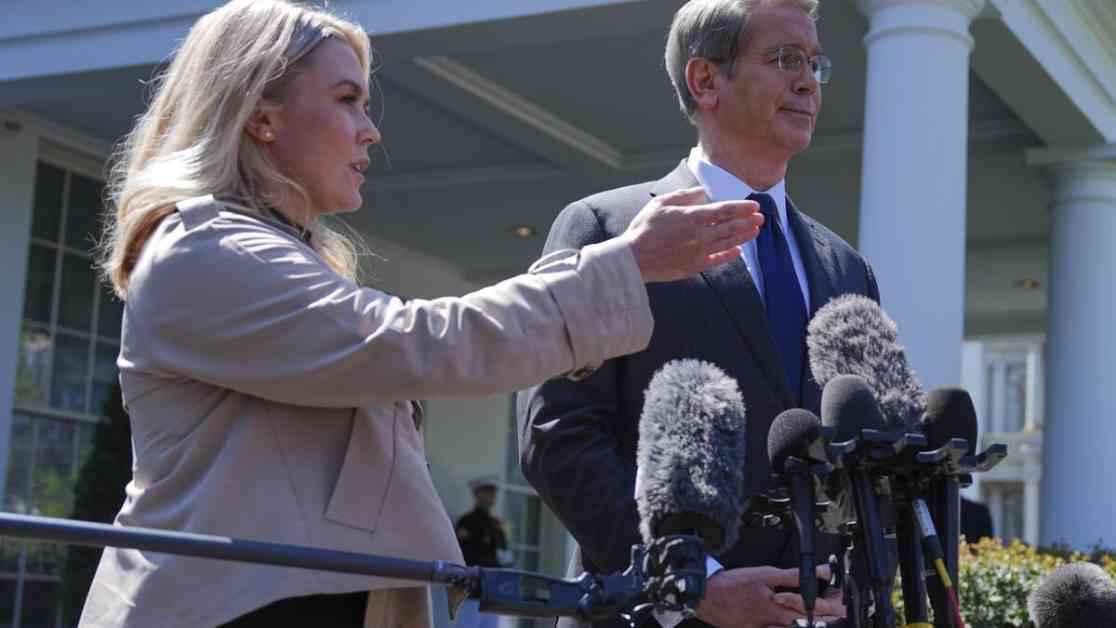The latest developments in Trump’s tariff policies have left many scratching their heads and wondering about the underlying motivations. From abrupt reversals to market fluctuations, the saga continues to unfold with twists and turns that keep everyone on their toes. Let’s dive into the speculation and analysis surrounding these tariffs to unravel the mystery and shed light on the potential implications for the economy.
Decoding Trump’s Tariff Strategy: A Closer Look
One of the most intriguing aspects of Trump’s recent tariff maneuvers is the sudden shift in his approach. After imposing reciprocal tariffs on numerous trading partners, he made a surprising move by pausing those tariffs for 90 days while simultaneously increasing tariffs on Chinese goods to a staggering 125%. This decision sent shockwaves through the stock market, which experienced a sharp one-day gain following the announcement.
While the initial market response was positive, concerns quickly arose about the long-term implications of Trump’s tariff policies. Economists and trade experts have been vocal in their criticism of the strategy, arguing that the U.S. is unlikely to emerge victorious in a prolonged trade war. The decision to maintain 10% worldwide tariffs and 25% tariffs on autos and auto parts, coupled with the heightened tariffs on Chinese imports, paints a bleak picture of the economic landscape moving forward.
Theories and Speculation: Unraveling the Mystery
As observers try to make sense of Trump’s tariff flip-flop, various theories have emerged to explain the sudden changes in policy. One prevalent theory revolves around the potential for stock manipulation, with accusations of insider trading and market manipulation swirling around the White House. Questions have been raised about whether certain individuals had advance knowledge of Trump’s tariff announcements and profited from the subsequent market fluctuations.
The timing of Trump’s social media posts and the suspicious activity in derivative markets have further fueled speculation about behind-the-scenes dealings. While the STOCK Act of 2012 prohibits government officials from trading on nonpublic information, the possibility of illicit activities cannot be ruled out. The implications of such actions could have far-reaching consequences for the financial markets and public trust in the administration.
Another theory posits that Trump’s economic advisors and political counselors influenced his decision to backtrack on the tariffs due to mounting pressure from business leaders and concerns about the market’s downward spiral. The bond market’s unusual behavior, with rising yields and falling prices, added another layer of complexity to the situation, prompting fears of a potential financial crisis induced by the tariff policies.
The Road Ahead: Navigating the Uncertainty
Despite the conflicting narratives and speculations surrounding Trump’s tariff strategy, one thing remains clear: the U.S. economy faces significant challenges in the wake of these policy decisions. International trade experts caution that a full-blown trade war with China could have severe repercussions for the American economy, leading to shortages of critical goods and essential components.
Adam S. Posen, an authority on international trade, warns that the U.S. is playing a risky game by escalating tensions with China. The misguided belief that the U.S. holds the upper hand in trade negotiations could backfire, resulting in stagflation and economic hardships reminiscent of past crises. As the implications of Trump’s tariff policies become more apparent, the need for a strategic and informed approach to trade relations has never been more critical.
In conclusion, the twists and turns of Trump’s tariff saga underscore the complexities of international trade and the delicate balance of economic interests at stake. As the story continues to unfold, it’s essential to remain vigilant and informed about the potential impact of these policies on the economy and the global marketplace. Only time will tell how this chapter in U.S. trade history will ultimately unfold, but one thing is certain: the path ahead is fraught with uncertainty and challenges that require careful navigation and thoughtful consideration.














